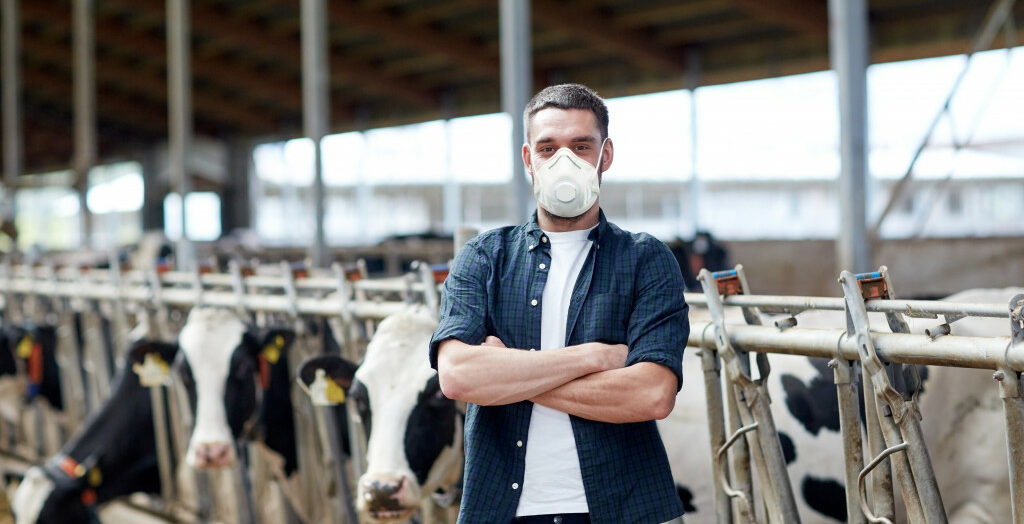As a livestock farmer, you know that the industry is constantly changing. What worked ten years ago might not work today, and what works today might be obsolete in ten years. That’s why staying up-to-date on the latest technology and trends is so important. Here are six ways modern technology is improving livestock farming:
1. Automation
Automation in livestock farming is becoming increasingly popular as farmers look for ways to improve efficiency and productivity. Several automation technologies can be used in livestock farming, including automatic feeders and water dispensers, milking machines, and temperature-controlled environments.
Automation can help reduce labor costs and improve animal welfare by providing a more consistent and controlled environment. Additionally, automation can help to reduce the risk of accidents and injuries on farms. As the use of automation technology continues to increase, there will likely be further improvements in the efficiency and productivity of livestock farming.
2. Improved Transportation Options
Transporting livestock can often be a challenging and time-consuming task. However, modern technology has improved the options for transporting livestock, including quality bumper pull livestock trailers with features such as climate-controlled environments, GPS tracking, and automatic water dispensers. These types of trailers offer improved safety and comfort for both the animals and the drivers during transport.
Not only has technology improved transportation options for livestock, but it has also improved the ability to track and trace animals. This can help with disease control and ensure animals are properly cared for during transport.
2. Data Management Systems
There are many types of data management systems available for livestock farmers. The most common are herd management software, milk analysis systems, and pasture monitoring systems. Herd management software helps farmers keep track of individual animals, their health records, and their milk production. Milk analysis systems help farmers track their milk’s fat, protein, and lactose levels.
Pasture monitoring systems help farmers to map out grazing areas and track the growth of grasses. There are also a variety of other data management systems available, such as feed management software, which helps farmers monitor the type and amount of feed their animals receive. These types of technology can help farmers improve their operations’ overall management and productivity.

4. Precision Agriculture
The term “precision agriculture” refers to the use of technology to manage and optimize agricultural production. This includes using GPS, drones, and sensors to collect data about soil, weather, and crops. This data is then analyzed to improve efficiency and yield. While precision agriculture is often associated with large-scale commercial farming operations, it can also be used in livestock farming. For example, precision agriculture can be used to track the health and whereabouts of individual animals.
This can help farmers identify and address health problems early on before they become widespread. In addition, precision agriculture can be used to monitor pasture conditions and grazing patterns. This information can help farmers decide when and where to move their animals to optimize growth and minimize environmental impact. Precision agriculture is an exciting and emerging field that has the potential to revolutionize livestock farming.
5. Genetic Selection
Modern technology has improved the ability of livestock farmers to select desirable traits in their animals through genetic selection. This can include selecting for increased milk or meat production, as well as disease resistance and hardiness. Genetic selection can improve the overall productivity and profitability of a farm operation.
However, farmers need to consider the ethical implications of genetic selection and ensure that the welfare of their animals is not compromised in pursuit of certain traits. It is important for farmers to carefully consider the long-term implications and potential consequences of genetic selection in their livestock breeding program.
6. Robotics
In recent years, there has been an increase in the use of robotics in livestock farming operations. These can range from automated feeding systems to robots that assist with milking and other tasks on dairy farms. Robotics can improve efficiency, reduce labor costs for farmers, and potentially improve animal welfare by reducing stress during tasks such as milking. While the use of robotics in livestock farming is still relatively new, it shows great potential for enhancing and improving the industry in the future.
Livestock farmers must be constantly adaptable to survive in the ever-changing agricultural industry. Luckily, there are many ways modern technology can help farmers improve their operations. From automation to data management systems to precision agriculture, there are plenty of ways to use technology to your advantage. So if you’re a livestock farmer, ensure you’re taking advantage of all the latest technological advances!






